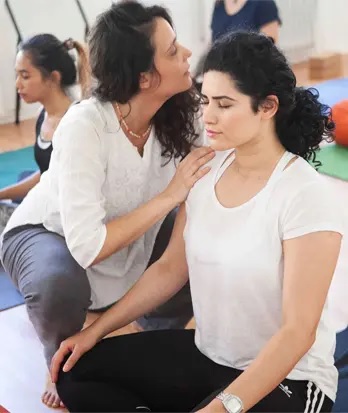Ashtanga Yoga, a dynamic and physically demanding practice, has gained immense popularity for its structured sequences and transformative impact. For those deeply passionate about this discipline, undertaking an Ashtanga Yoga teacher training program is the next logical step. This comprehensive guide delves into what Ashtanga Yoga teacher training entails, its benefits, and how to choose the best program.
What is Ashtanga Yoga?
Ashtanga Yoga is a system of yoga that involves synchronizing the breath with a progressive series of postures—a process producing intense internal heat and a profuse, purifying sweat that detoxifies muscles and organs. This method, which follows a set sequence of postures, was developed by K. Pattabhi Jois in the 20th century and is known for its emphasis on strength, flexibility, and stamina.
Why Choose Ashtanga Yoga Teacher Training?
Deepening Your Practice
Embarking on an Ashtanga Yoga teacher training program allows practitioners to deepen their understanding and practice of this demanding form of yoga. Trainees learn the intricacies of the primary and, in some cases, intermediate series, gaining insight into advanced postures and techniques.
Teaching Proficiency
The training equips students with the skills necessary to teach Ashtanga Yoga confidently. This includes mastering adjustments, understanding anatomy, and learning how to sequence classes effectively. Graduates are prepared to guide others through their Ashtanga journey with safety and integrity.
Yoga has transcended its ancient roots to become a globally embraced practice for enhancing physical health, mental clarity, and emotional balance. With its growing popularity, many enthusiasts are eager to deepen their practice and share their passion by becoming certified yoga instructors. If you’re looking to turn your love for yoga into a fulfilling career, this guide will walk you through the essential steps to become a certified yoga instructor.
Understanding the Role of a Yoga Instructor
Before embarking on this journey, it’s crucial to understand what being a yoga instructor entails. Yoga instructors are responsible for guiding students through yoga practices, ensuring proper technique, promoting mindfulness, and fostering a supportive community. Beyond teaching asanas (poses), instructors often delve into yoga philosophy, anatomy, and the ethical responsibilities that come with teaching.
Why Become a Certified Yoga Instructor?
Becoming a certified yoga instructor offers numerous benefits:
Deepened Personal Practice: Teacher training programs deepen your understanding of yoga, enhancing both your personal and teaching practices.
Career Opportunities: Certification opens doors to teaching in studios, gyms, retreats, and even starting your own yoga business.
Personal Fulfillment: Sharing the transformative power of yoga with others can be immensely rewarding.
Community Connection: Joining the network of yoga instructors can lead to lasting friendships and professional connections.
In recent years, the popularity of yoga has surged, making the aspiration to become a yoga instructor a fulfilling and viable career path for many. This journey is not only about mastering physical postures but also about embracing a lifestyle that promotes balance, mindfulness, and holistic well-being. Here’s a comprehensive guide on how to become a yoga instructor, highlighting the essential steps and considerations.
Understanding the Role of a Yoga Instructor
Before diving into the process, it’s crucial to understand what being a yoga instructor entails. It goes beyond leading classes; it involves guiding students through their physical, mental, and spiritual journeys. A yoga instructor helps individuals connect with their inner selves, improve their physical health, and manage stress through the practice of yoga.
Step-by-Step Guide to Becoming a Yoga Instructor
1. Deepen Your Personal Practice
The first step to becoming a yoga instructor is to cultivate a deep personal practice. This means regularly attending yoga classes, experimenting with different styles, and developing a routine that integrates yoga into your daily life. The more familiar you are with yoga’s physical and philosophical aspects, the better equipped you will be to teach others.
2. Choose a Yoga Style
Yoga encompasses various styles, each with its unique philosophy and approach. Whether it’s Hatha, Vinyasa, Ashtanga, Bikram, or Kundalini, it’s essential to choose a style that resonates with you. This will not only make your practice more enjoyable but also align your teaching with your personal values and interests.
3. Enroll in a Yoga Teacher Training (YTT) Program
A Yoga Teacher Training (YTT) program is a critical step in your journey. Most programs require at least 200 hours of training, covering areas such as anatomy, physiology, teaching techniques, and the history and philosophy of yoga. When selecting a YTT program, consider factors like the curriculum, the instructors’ experience, the program’s accreditation, and reviews from past participants.

